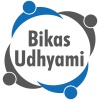SOCIAL ENTREPRENEURSHIP BLOG SERIES ISSUE NO. 8: Solving Water Scarcity Issues in Nepal: The Story of Best Paani
If you are a resident of Kathmandu, you have probably stood in line to get water either early morning or late night. Or waited for the water tank that promised to reach your home on time. This is not an uncommon tale in Kathmandu Valley, where majority of houses suffer from water scarcity. Most have to depend on weekly and irregular water supply and resort instead to pulling water via electric motor pumps. As the water pressure rises up, your electricity bill shoots up. But do you know that there is an easy solution to this problem? Best Paani is a social enterprise that provides the solution to the existing water scarcity and increasing demand of water through rain water harvesting and filtration technologies.
Sajal Pradhan, Co-Founder of Best Paani, shares her experiences of dealing with these challenges. Perhaps, after reading this interview, you may be her next client.
How did Best Paani start?
Our co-founder Gokul Dangal, a water engineer by profession, started installing rain water harvesting systems in his own capacity 10 years ago. At that time, the government was struggling to supply sufficient water and Nepal was (and is still) facing a severe water crisis. Gokul began experimenting with rain water systems for family and friends. Afterwards, people advised him to pursue it as a business. That was when Gokul tried to standardize the pre-existing practice of rain water harvesting for drinking purposes.
How long have you been at Best Paani?
Since 2014. I was doing my masters in Sustainable Development and working at ICIMOD’s SERVIR data mapping project when Gokul approached me. I had volunteered making wells after S.L.C., so I was vaguely familiar with the technology and as a student of sustainability, I understood the impact clean water had in Nepal. Although I hadn’t yet decided to focus on specifically water issues, I knew I wanted to be part of the solution, not the problem. Gokul convinced me that this was a great opportunity to create tangible impact and our assertions were confirmed after the earthquake when we were able to create access to clean water for thousands of victims, preventing water-borne diseases and epidemics in earthquake impacted areas.
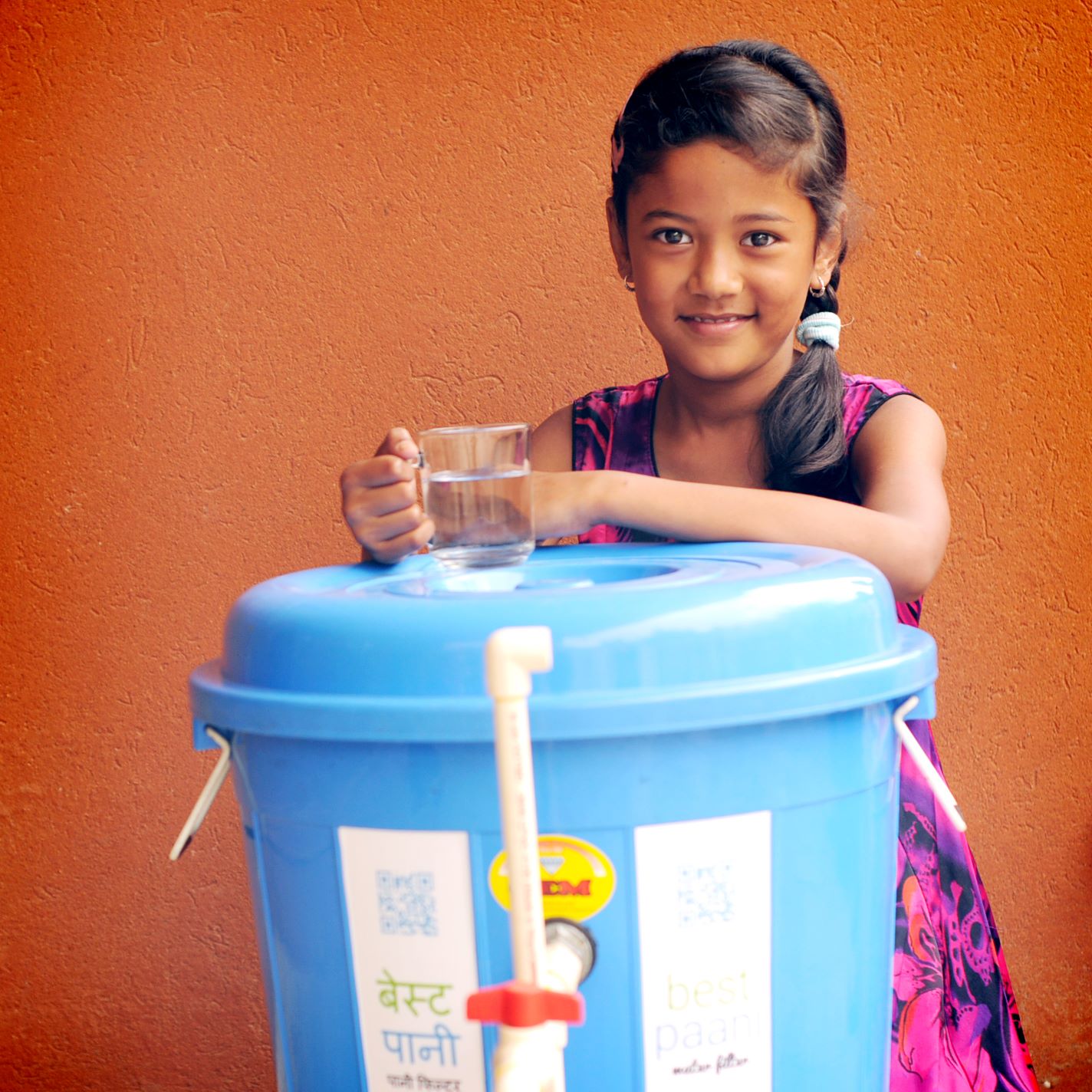
And what influenced Gokul to start Best Paani?
At that time Kathmandu residents were struggling to meet their water demands. Empty taps, long waiting lines and irregular supply. Even today, 60% of the water from the source is lost to pipe leakages. As a water engineer, he saw that the centralized water system was failing the public, while their resultant extraction of ground water was exhausting, dehydrating and weakening Kathmandu’s soil. After having experienced it himself, he felt it was wrong that people’s lives were limited due to the constraints of water scarcity, and given his technical expertise in water engineering, he felt this was the area where he could create societal value through his skills.
How does Best Paani’s system work?
In a typical Best Paani system, we collect rain water and make it drinkable. Rain water is collected from roof tops, directed to tanks and filtered through different layers of sand-filtration depending on the usage purpose. These filters require neither electricity nor any chemicals as they are intended to be compatible in rural and urban landscapes. We install different types of filters according to the size and quality required for the water usage. For instance, drinking purposes would require an advanced filtration versus gardening or showering purposes. In all systems, we encourage people to recharge the ground water by sending the extra water underground. We discourage people from send the collected water through drainage, because the drainage joins the river and that water will create floods that claim lives down South in Terai. Rather, pour it back into the soil and you will get that water back through your own water well.
Why rain water harvesting?
Take audio communications as an example. First, we got centralized telephone wires all over cities, and then we invented cell phones which has now replaced most telephone lines in Kathmandu. Initially, the government was trying to copy the centralized wired communications model in rural areas as well but now they’ve scrapped such plans because they realize now that it is far more effective to simply leapfrog to buying cell phones.
Similarly, it does not make sense for the Nepali government to waste billions of rupees connecting every house to a central water piping system when it is far cheaper and far more efficient for everyone to have their own decentralized rain water harvesting systems. No leaking pipes, no shortage of water, no waiting for rationed water supply hours and no waking up at 4 am like my parents used to while living in Patan, to turn on their water pump.
What kind of social impact have you created?
It humbles me when I think about the impact our team of now 10 people has created within 3 years of operations. We have created clean water access for 300,000 people. Our work has reduced the societal costs of water and given back an estimated 1.7 to 19 crores (according to WHO’s calculation method). We have recharged 3.3 million water under ground and prevented female student dropouts largely in rural Nepal.
In urban areas, such as Kathmandu, many people use water provided by water tanks, but no one knows where that water is sourced from. I don’t use tank water but I have seen in restaurants that do, a high presence of ammonia, Sulphur and iron. A recent study even claimed that 92% of even bottled water in Nepal has shown presence of Escherichia Coli bacteria. In contrast, the water filtered by our systems is guaranteed to meet WHO global standards for drinking water.
We have also lobbied for rain water harvesting policies. Last year, we were pleased to learn that Kathmandu municipality made rain water harvesting mandatory for constructions of large footage. We continue to lobby for efficient implementation of that policy and for introductions of similar policy in Lalitpur and other areas.
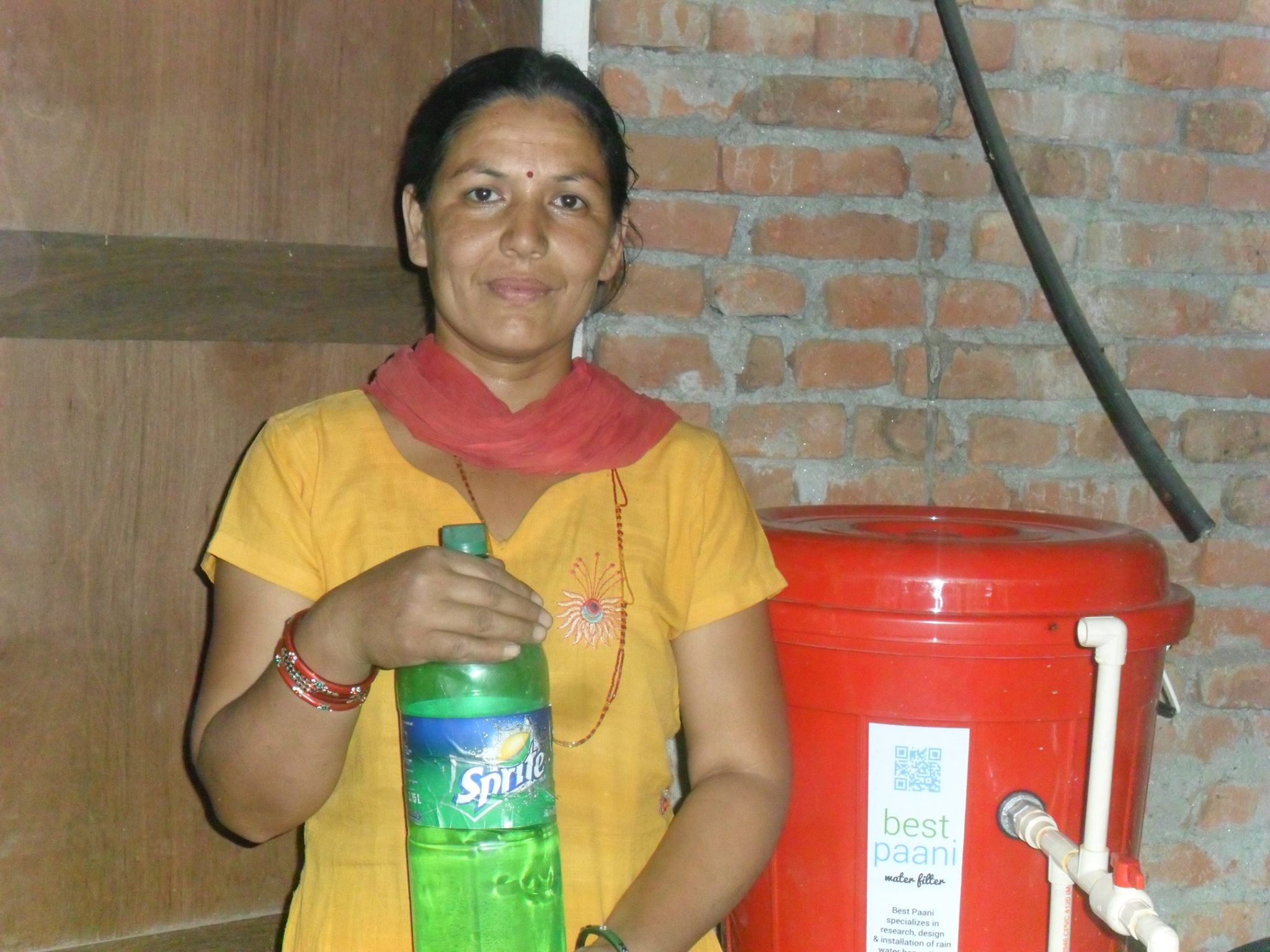
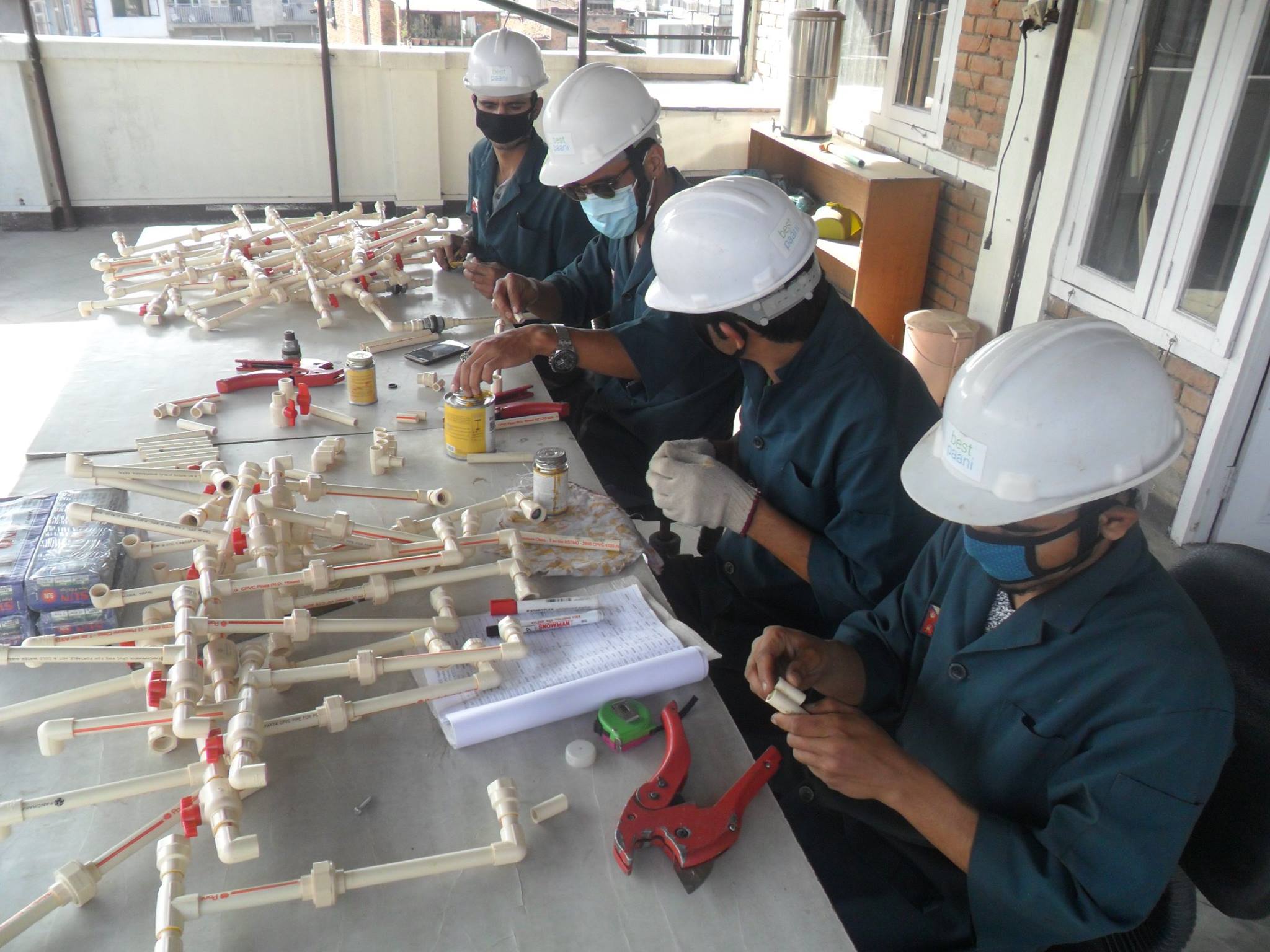
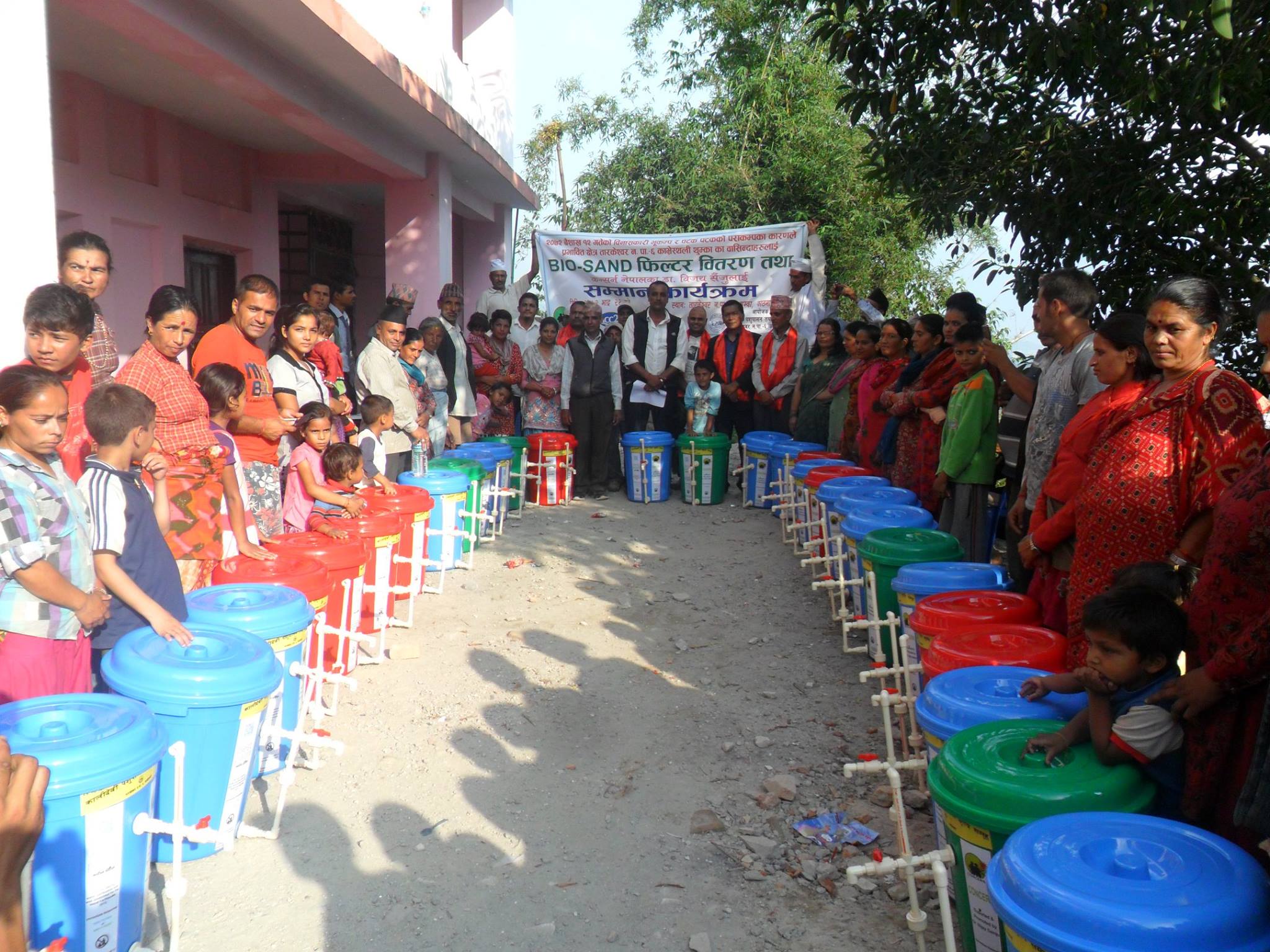
Tell us about the impact of water outside the valley.
80% of hospital beds in Nepal are attributed to water borne diseases. Majority of drop outs in schools are attributed to water scarcity.
Access to water in a school determines how likely a girl is to study after menstruation. This also determines how likely her children are to be taken care of by an educated guardian. I believe that if Nepalese mothers were more educated, we would not lose 50,000 children under 5 each year to preventable conditions.
Best Paani’s work not only enhances the quality of person’s life but also increases the chances of their children’s survival. In other schools we've worked in, children are sent to fetch water from far away locations rather than to school, sometimes leading to child abduction or molestation. In the day to day life scenario, safe water at homes ensures that working individuals can provide for their families without falling sick or losing the family's income source, or even their lives, to a preventable water born disease.
We understand the vast impact water has in people’s lives. Safe water should not be a barrier for a person’s wellbeing, and we are working on this problem so that it doesn’t.
How much does the system cost, how long it will sustain?
Since Kathmandu receives rainfall at least once in 2 months, we make 3-month backups for our systems and they ensure all-year-round usage. Our filter doesn’t need electricity and we do not use any chemicals. We use slow sand gravitational filters that have different layers and is available in different sizes. The cost depends on the size you buy. While our smallest portable filters costs NPR 12,000, a large full-scale system ranges in general from NPR 40,000 to NPR 200,000 and lasts for at least 25 years.
What have the challenges been until now?
We have struggled, as I think most social enterprises do, in defining their middle ground between capitalistic and social approaches in doing business: from creating fair salary structures, equitable payment structures and to balancing the trade-offs between creating impact and maintaining margins. As an industry, the social enterprising community struggles to lobby for policy changes. I think things are getting better as the government better recognizes the importance of sustainable social enterprises, particularly over and alongside corporate social responsibility (CSR).
As social entrepreneurs, we like to believe that we can create efficient systems through which people will invest their personal money to create social goods such as ground water availability. However, we have struggled and continue to struggle in designing a financially sustainable model for ground water recharge.
And, of course, there’s the gender dimension. Given that the majority of entrepreneurs, technical staffs and office workers are male, I admit there is a degree of isolation and differentiated treatment a woman in business is likely to experience, particularly in Asia. That said, I think it is important to ignore such noises, in order maximize your productivity.
What recommendations do you have for newcomers?
Perhaps the first is that when you think you have only half the knowledge you need to start your project/business, trust me, that’s enough to start. Take it from the initial idea and just do it.
The second would be to not get disillusioned with the romantic notion of seeing social entrepreneurship solely a passionate endeavor: it’s mostly decoding operations and setting up systems, just as it is in any other form of entrepreneurship. And it’s okay if you do not feel passionately about saving the world in dramatic fashion through social enterprise since day one. It has taken me months, and I’d say even years, to truly appreciate the impact we have created in peoples’ lives. It’s enough that you are a well-meaning individual simply trying to do what is right by your values, or even trying to simply avoid doing what is wrong given your values.
It also helps if you check in with yourself occasionally to figure out what you enjoy about the process: whether you are passionate about the operations, rural development, public speaking. A lot of it has to do with combining your existing skills and passions with wanting to do create value in society. Figuring out yourself helps you realize how you want to be placed within your organization for the benefit of your team.
Finally, the single greatest thing you can do is to get yourself a great mentor. I cannot highlight enough, the importance of a mentor that understands and cares for your growth.
Website: http://bestpaani.com/
